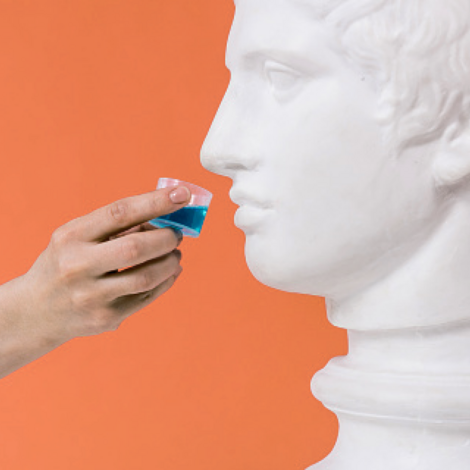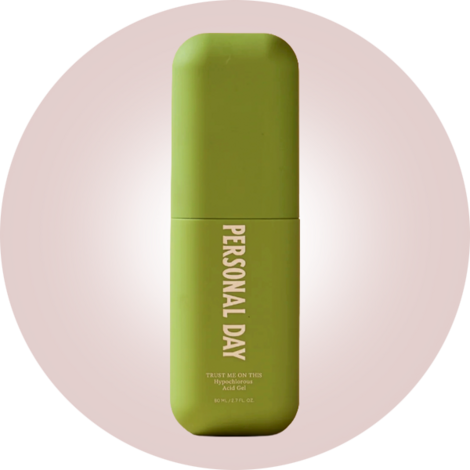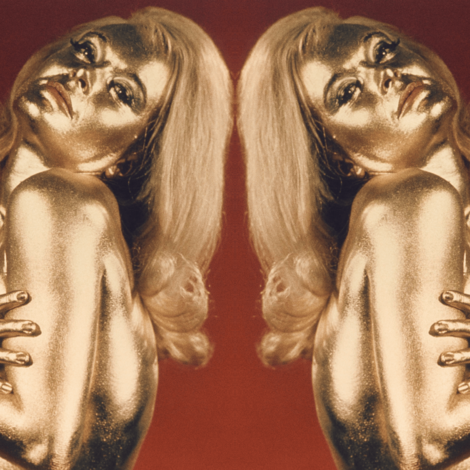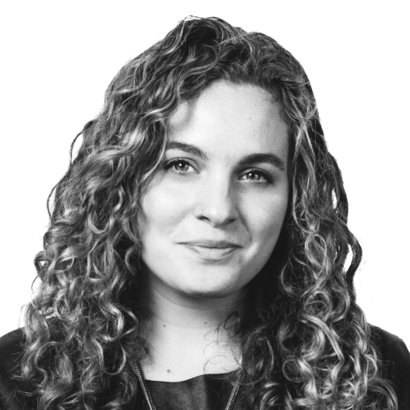Blunt, tempestuous, ruffled, edgy, and messy: it’s not only the mindset of many of us during this anxious moment. It’s also the haircut the moment wears.
This could be written off as an Internet thing, or a street-style thing, or even a fashion thing. But it’s everywhere. The Miu Miu show during Paris Fashion Week in March, for starters: the models took to the runway looking like someone backstage had given them all noogies. There was frizz sprouting from the crowns of their heads, and big cowlicks swooping down the sides.

“We’re coming into this era of being able to express individuality and embracing uniqueness—there’s more room for things that are unconventional and offbeat,” says Evanie Frausto, the hairstylist who recently cut Bella Hadid’s bangs into a cut, oiled crop for a Marc Jacobs advertising campaign. “Bella is a great example of it. She is so committed to her jobs as a model that she’ll say, ‘Just cut it off.’ In situations, she’ll always be like, ‘I want it a little different or a little weird.’”
The trend could also be seen as a predictable response to the heavily filtered aesthetic that dominates social media. “We’ve all spent so long looking at really pretty beauty looks,” says Rachael Gibson, who explores the hair in paintings and sculpture on her Instagram account, @thehairhistorian. “Now people want to appear more confrontational.”

Ugly is suddenly looking so hot. The person I’m married to has an absolutely restless cowlick-mullet that becomes more interesting the longer it goes unchecked. Miley Cyrus has adopted not one but two knowingly funky animal styles: the wolf cut (remember Teen Wolf?) and skunk roots. Andrea Riseborough appeared at the Oscars with a haircut that looked chillingly like Mark Zuckerberg’s homage to Julius Caesar.

Some of these coveted hairstyles take cues from the queer community. “These ugly-hot or intentionally ugly haircuts can be a way for queer people to reject gender norms or societal expectations,” says Mia Zappacosta, an actor and content creator in Nashville with 2.5 million likes on TikTok. Because queer people often don’t feel comfortable at hair salons (often highly gendered), Zappacosta says, they’ll cut their hair at home, “which leads to a choppier vibe.”
If the finished haircuts seem birthed during a late-night fever dream, that’s by design. People want “something that looks like you’ve cut it at two A.M. in your bathroom, mid-meltdown,” says Erik Pascarelli, the senior stylist at London’s Haco salon.

He’s been cutting plenty of chunky sharp lines and bobs with long pieces underneath, so nothing looks too done. “Do I love it, or do I hate it?” he asks without answering. He does make one conclusion: “It’s very provocative.”
Not everyone’s a fan. “I’ve been on a rampage about this for months in my head,” says Garren, who has created memorable haircuts on Madonna, Naomi Campbell, Linda Evangelista, and countless other top models. “I’m not sure if it’s a rebellion against the system, or this is what they really think.”

These haircuts could also reflect more tolerance for a disarrayed, relaxed look—perhaps initiated by the casual style associated with the pandemic. “Your hair is like a pair of vintage Levi’s,” says Jayne Matthews, a hairstylist in Oakland who teaches a popular D.I.Y.-cutting class online. “It needs to get worn in.” Her clients prefer a look that is frizzy, dried, and fried. The rejection of the shaping, smoothing, cleaning power of a stylist has an anarchic power—even if you use a stylist to achieve it.
Maggie Lange is a New York–based writer





